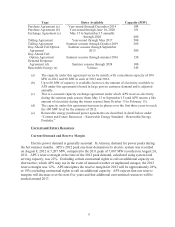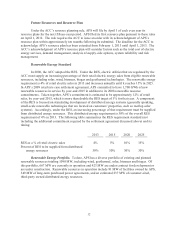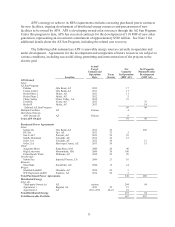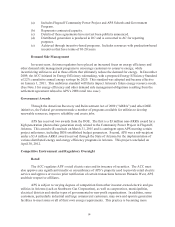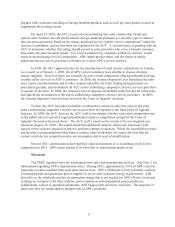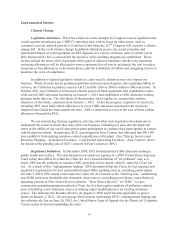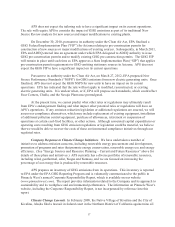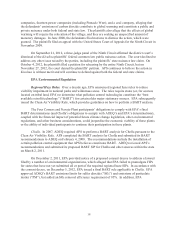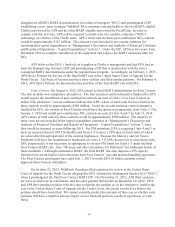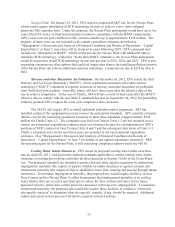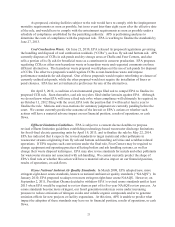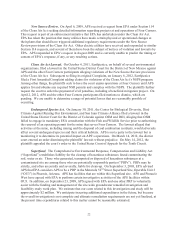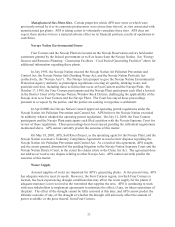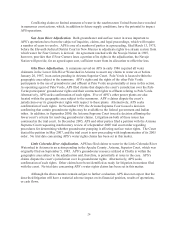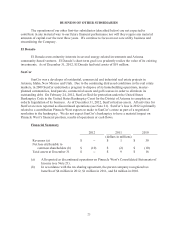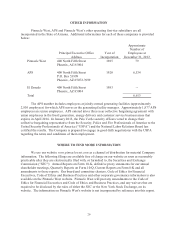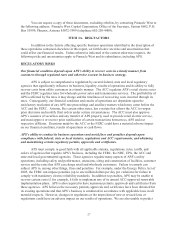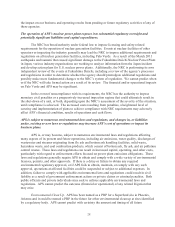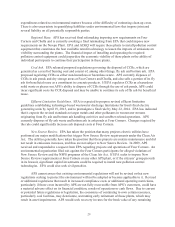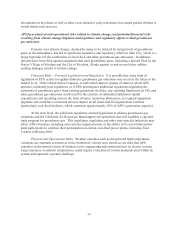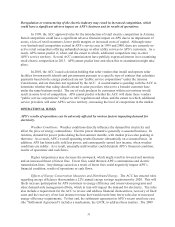APS 2012 Annual Report Download - page 45
Download and view the complete annual report
Please find page 45 of the 2012 APS annual report below. You can navigate through the pages in the report by either clicking on the pages listed below, or by using the keyword search tool below to find specific information within the annual report.21
As proposed, existing facilities subject to the rule would have to comply with the impingement
mortality requirements as soon as possible, but in no event later than eight years after the effective date
of the rule, and would have to comply with the entrainment requirements as soon as possible under a
schedule of compliance established by the permitting authority. APS is performing analyses to
determine the costs of compliance with the proposed rule. EPA is working to finalize the standards by
June 27, 2013.
Coal Combustion Waste. On June 21, 2010, EPA released its proposed regulations governing
the handling and disposal of coal combustion residuals (“CCRs”), such as fly ash and bottom ash. APS
currently disposes of CCRs in ash ponds and dry storage areas at Cholla and Four Corners, and also
sells a portion of its fly ash for beneficial reuse as a constituent in concrete production. EPA proposes
regulating CCRs as either non-hazardous waste or hazardous waste and requested comments on three
different alternatives. The hazardous waste proposal would phase out the use of ash ponds for disposal
of CCRs. The other two proposals would regulate CCRs as non-hazardous waste and impose
performance standards for ash disposal. One of these proposals would require retrofitting or closure of
currently unlined ash ponds, while the other proposal would not require the installation of liners or
pond closures. EPA has not yet indicated a preference for any of the alternatives.
On April 5, 2012, a coalition of environmental groups filed suit to compel EPA to finalize its
proposed CCR rule. Soon thereafter, coal ash recyclers filed similar lawsuits against EPA. Although
we do not know when EPA will issue a final rule or by when compliance will ultimately be required, in
an October 11, 2012 filing with the court, EPA took the position that it will need at least a year to
finalize the rule. Motions and cross-motions for summary judgment are currently pending before the
court. We cannot currently predict the outcome of the lawsuit or EPA’s actions or whether such
actions will have a material adverse impact on our financial position, results of operations, or cash
flows.
Effluent Limitation Guidelines. EPA is subject to a consent decree deadline to propose
revised effluent limitation guidelines establishing technology-based wastewater discharge limitations
for fossil-fired electric generating units by April 19, 2013, and to finalize the rule by May 22, 2014.
EPA has indicated that it expects the revised standards to target metals and other pollutants in
wastewater streams originating from fly ash and bottom ash handling activities and scrubber-related
operations. If EPA requires such conversions under the final rule, Four Corners may be required to
change equipment and operating practices affecting boilers and ash handling systems, as well as
change their waste disposal techniques. EPA may also revise standards for metals and other pollutants
for wastewater streams not associated with ash handling. We cannot currently predict the shape of
EPA’s final rule or whether this action will have a material adverse impact on our financial position,
results of operations, or cash flows.
Ozone National Ambient Air Quality Standards. In March 2008, EPA adopted new, more
stringent eight-hour ozone standards, known as national ambient air quality standards (“NAAQS”). In
January 2010, EPA proposed to adopt even more stringent eight-hour ozone NAAQS. However, on
September 2, 2011, President Obama decided to withdraw EPA’s revised ozone standards until at least
2013 when EPA would be required to review them as part of its five-year NAAQS review process. As
ozone standards become more stringent, our fossil generation units may come under increasing
pressure to reduce emissions of nitrogen oxides and volatile organic compounds and/or to generate
emission offsets for new projects or facility expansions. At this time, APS is unable to predict what
impact the adoption of these standards may have on its financial position, results of operations, or cash
flows.


